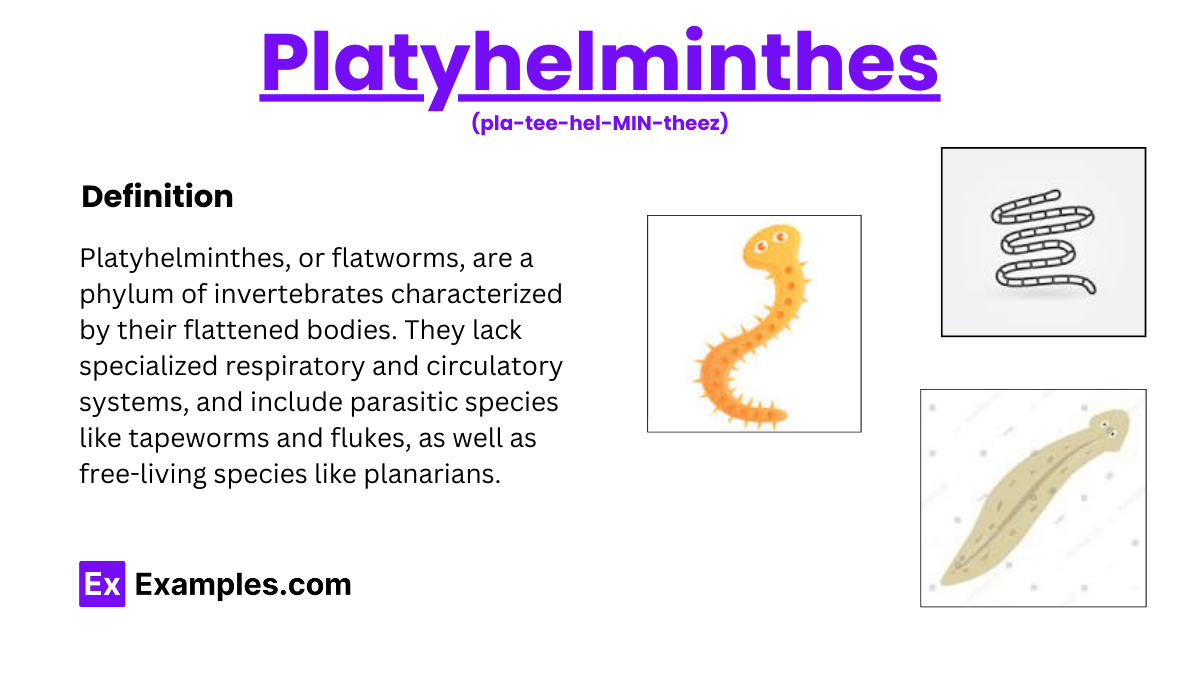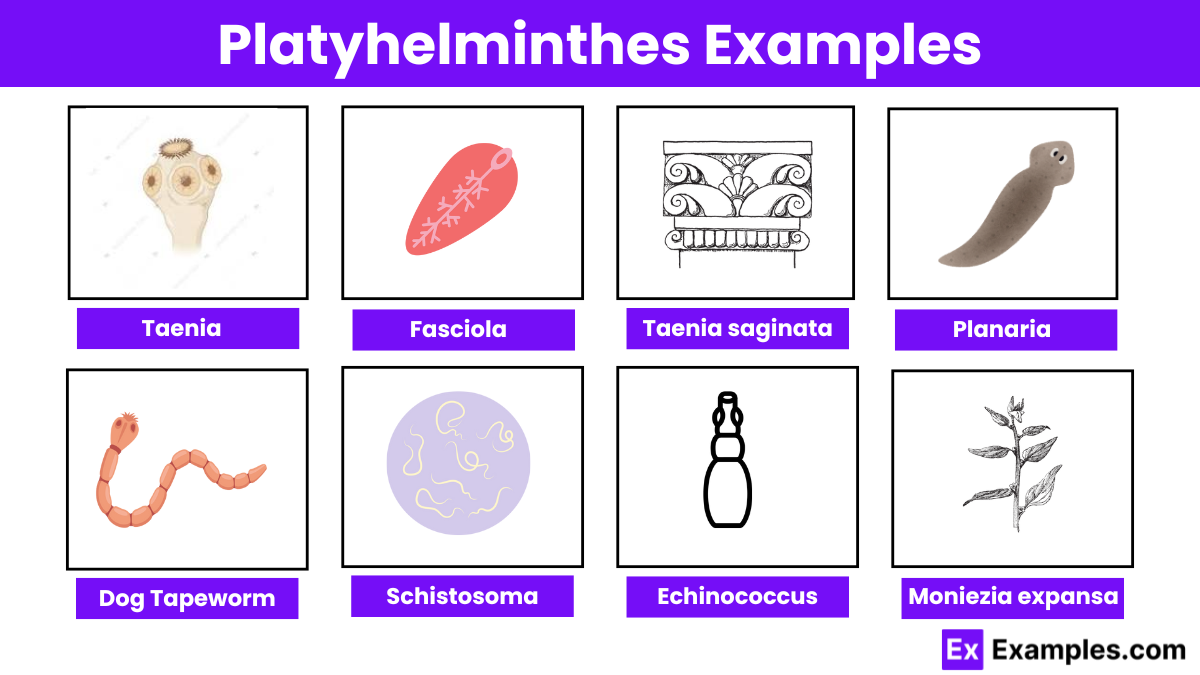What is the common characteristic of Platyhelminthes?
Segmented bodies
Bilateral symmetry
Exoskeleton
Jointed appendages


Platyhelminthes, commonly known as flatworms, are a diverse phylum of simple, bilaterally symmetrical, and unsegmented invertebrates. They exhibit a dorsoventrally flattened body and include free-living forms like planarians, as well as parasitic species such as tapeworms and flukes. Flatworms lack specialized respiratory and circulatory systems, relying on diffusion for gas exchange and nutrient distribution. This phylum is crucial for understanding basic biological processes and the evolution of more complex organisms.
Platyhelminthes, or flatworms, are a phylum of simple, bilaterally symmetrical invertebrates with a dorsoventrally flattened body. They lack specialized respiratory and circulatory systems and include both free-living species, like planarians, and parasitic species, such as tapeworms and flukes.

They inhabit freshwater, marine, terrestrial environments, and the bodies of various hosts.
They have a dorsoventrally flattened, bilaterally symmetrical body.
No, they are acoelomate, lacking a body cavity.
They reproduce both asexually through regeneration and sexually, often as hermaphrodites.
Free-living species eat small animals and organic matter, while parasitic species absorb nutrients from their hosts.
They move using cilia on their ventral surface or by muscular contractions.
Yes, they have a simple digestive system with one opening, or none in some parasitic species.
They rely on diffusion for gas exchange as they lack specialized respiratory systems.
They decompose organic matter and serve as bioindicators for environmental health.
They are often transmitted through contaminated food, water, or intermediate hosts.
Text prompt
Add Tone
10 Examples of Public speaking
20 Examples of Gas lighting
What is the common characteristic of Platyhelminthes?
Segmented bodies
Bilateral symmetry
Exoskeleton
Jointed appendages
Which of the following is NOT a characteristic of Platyhelminthes?
Dorsoventrally flattened bodies
Lack of a digestive system
Presence of a coelom
Hermaphroditism
What type of digestive system is present in Platyhelminthes?
Complete with mouth and anus
Incomplete, with only one opening
Absent digestive system
Digestive system with multiple openings
Which of the following organisms belongs to the phylum Platyhelminthes?
Earthworm
Hydra
Planaria
Jellyfish
How do most Platyhelminthes reproduce?
Sexually, as hermaphrodites
Sexually, with distinct sexes
Asexually through fragmentation
Asexually through budding
What type of excretory system is found in Platyhelminthes?
Malpighian tubules
Flame cells
Nephridia
Kidneys
Which class of Platyhelminthes consists primarily of parasitic organisms?
Cestoda
Turbellaria
Annelida
Nematoda
Which of the following is a feature of the nervous system in Platyhelminthes?
Ventral nerve cords
Dorsal nerve cords
Single nerve cord
Lack of any nervous system
Which of the following statements about Platyhelminthes is true?
They are coelomates with a complete digestive system.
They are radially symmetrical organisms.
They have a specialized circulatory system.
They are dorsoventrally flattened acoelomates.
Which of the following statements describes a parasitic flatworm?
It is a free-living organism found in water.
It feeds off the host’s nutrients and lives inside the body.
It is an autotrophic organism that produces its own food.
It uses sunlight for energy through photosynthesis.
Before you leave, take our quick quiz to enhance your learning!

